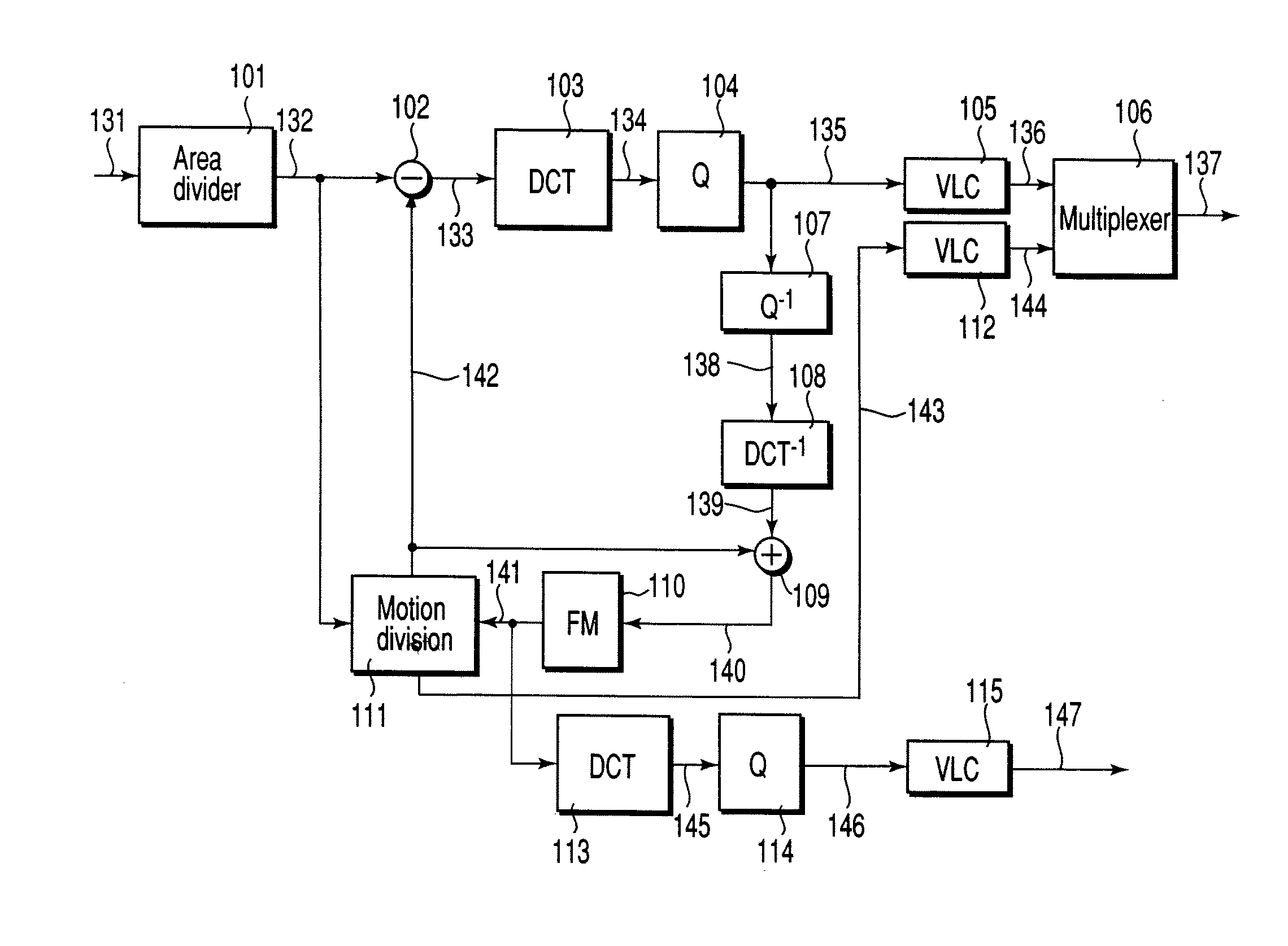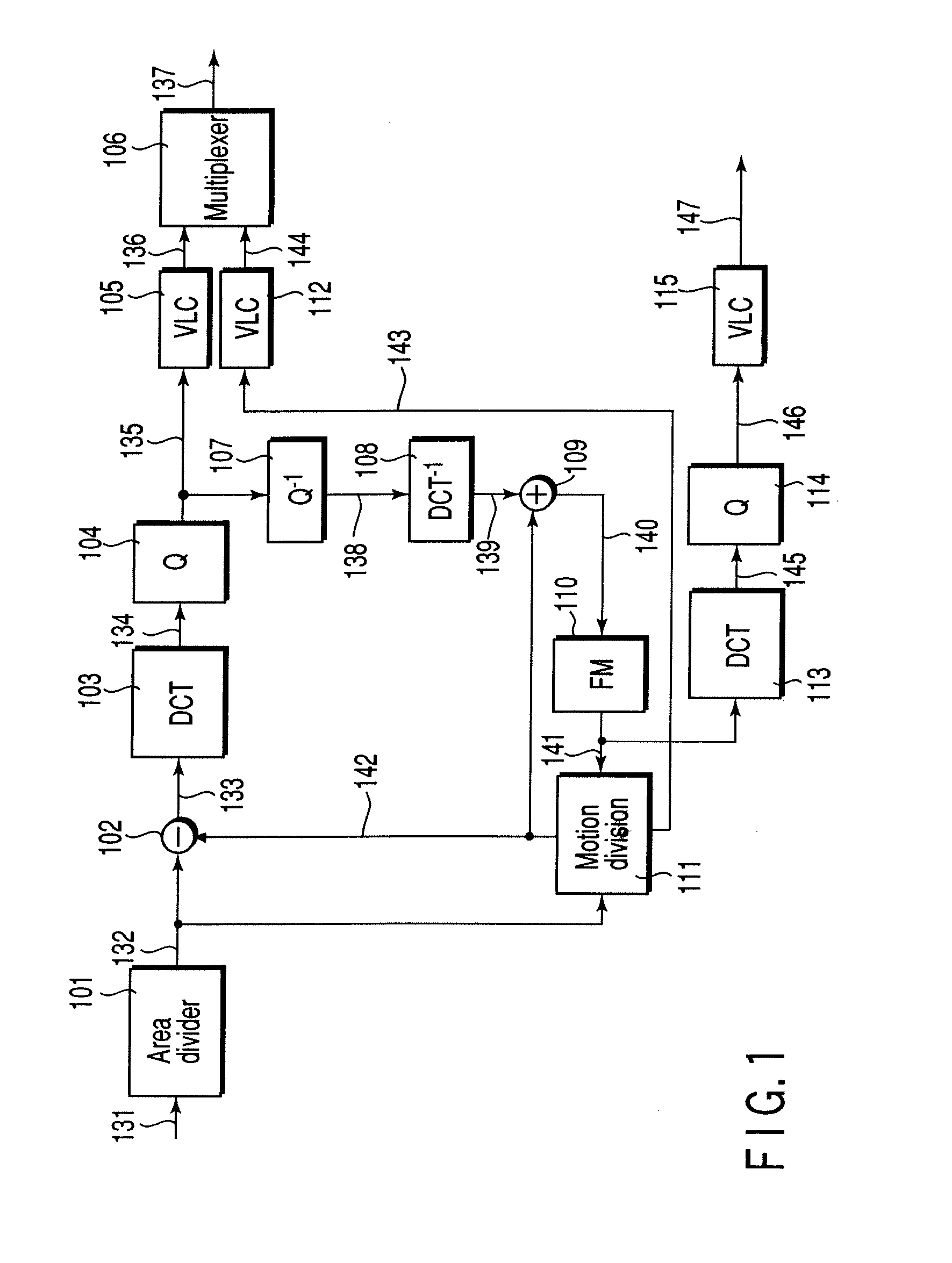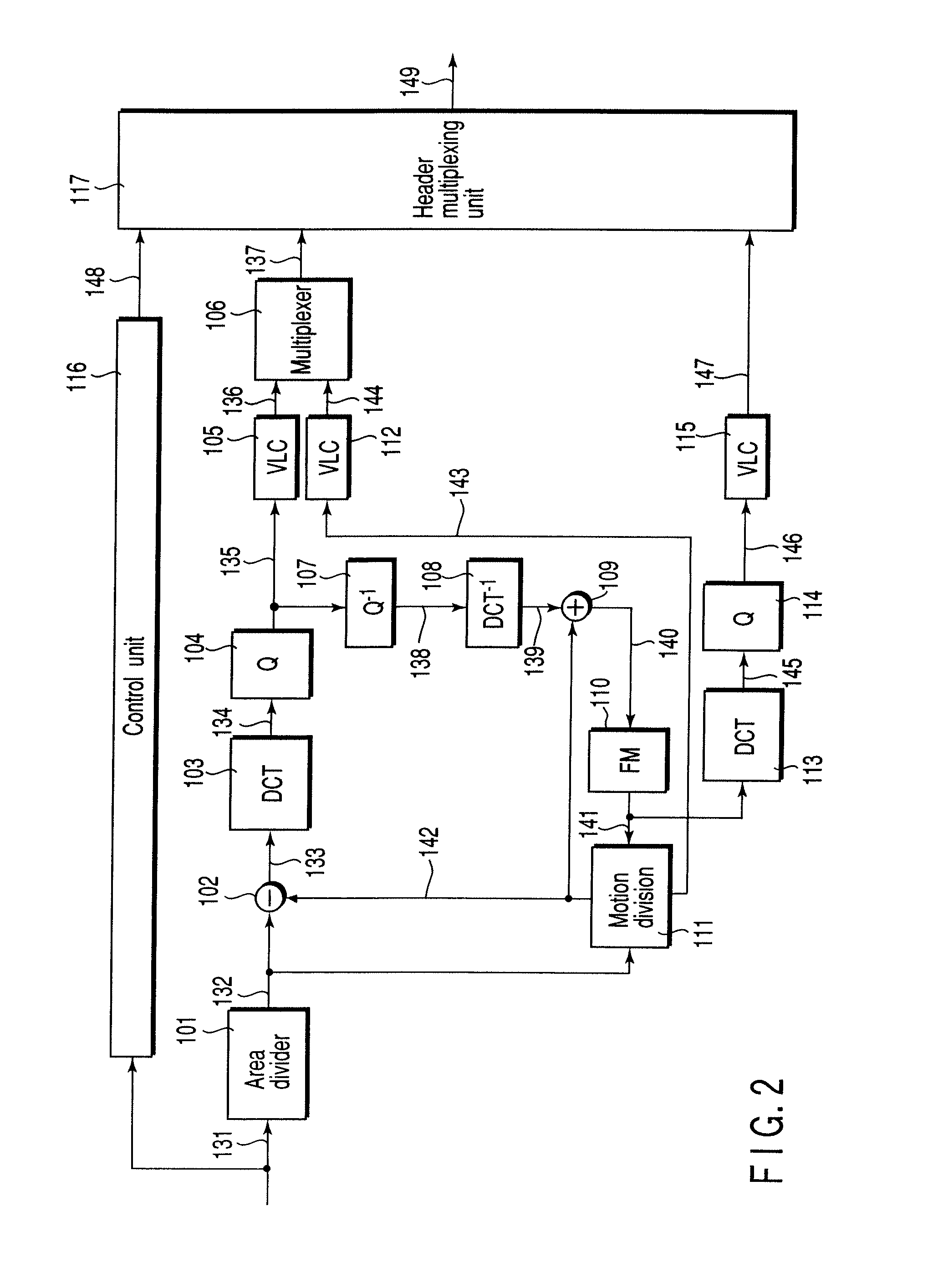Picture encoding method and apparatus and picture decoding method and apparatus
a picture encoding and picture technology, applied in the field of picture encoding methods and apparatuses, can solve the problems of affecting the encoding efficiency of the picture, the decoding quality is noticeably deteriorating, and the predictive error is added to the residual error, so as to achieve the effect of quick recovery from an error and high encoding efficiency
- Summary
- Abstract
- Description
- Claims
- Application Information
AI Technical Summary
Benefits of technology
Problems solved by technology
Method used
Image
Examples
first embodiment
[0037]FIG. 1 shows the basic arrangement of a picture encoding apparatus according to the first embodiment of the present invention.
[0038] An input video signal 131 is divided into a plurality of predetermined areas first by an area divider 101 and then subjected to the following motion compensation adaptive prediction. A motion compensation adaptive predictor 111 detects a motion vector 143 between an input picture signal 132 and a reference picture signal 141 of the previous frame which is stored in a frame memory 110 and has already been encoded and subjected to a local decoding. Motion compensation is performed for the reference picture signal 141 by using this motion vector. This generates a predictive picture signal (the reference picture signal after motion compensation) 142. The motion compensation adaptive predictor 111 selects a suitable prediction mode of the motion compensation prediction mode and the intra encoding (predictive picture signal=0) mode using the input pic...
second embodiment
[0061]FIG. 11 shows the arrangement of a picture encoding apparatus according to the second embodiment of the present invention. In the first embodiment, a reference picture code stream is output as a frame different from a video code stream. In the second embodiment, a reference picture code stream is output as additional information for the frames of a video code stream. The same reference numerals as in FIG. 1 denote the same parts in FIG. 11, and only the differences from the picture encoding apparatus according to the first embodiment will be described. In this embodiment, a reference picture code stream 147 is input to a multiplexer 106 to be multiplexed with a quantized and variable-length-encoded DCT coefficient 136 and motion vector code stream 144. The resultant data is then output.
[0062] With this arrangement, a reference picture signal required to encode and decode a specific frame of a video code stream is added to the frame. More specifically, as shown in FIG. 12, the...
third embodiment
[0065]FIG. 14 shows the arrangement of a picture encoding apparatus according to the third embodiment of the present invention. In the first and second embodiments, the reference picture code stream 147 is generated by encoding the reference picture signal stored in the frame memory 110. In the third embodiment, a reference picture code stream 147 is generated by encoding a reference picture signal (predictive picture signal) after motion compensation. In this motion compensation, a reference picture obtained by selecting optimal portions from the reference picture signal stored in a frame memory 110 on a small area basis (mainly on a macroblock basis) is generally stored in the frame memory. For this reason, a reference picture signal 142 after motion compensation is a signal selected from a reference picture signal 141 stored in the frame memory 110 on a macroblock basis.
[0066] Referring to FIG. 14, the reference picture signal 142, which has undergone motion compensation (select...
PUM
 Login to View More
Login to View More Abstract
Description
Claims
Application Information
 Login to View More
Login to View More - R&D
- Intellectual Property
- Life Sciences
- Materials
- Tech Scout
- Unparalleled Data Quality
- Higher Quality Content
- 60% Fewer Hallucinations
Browse by: Latest US Patents, China's latest patents, Technical Efficacy Thesaurus, Application Domain, Technology Topic, Popular Technical Reports.
© 2025 PatSnap. All rights reserved.Legal|Privacy policy|Modern Slavery Act Transparency Statement|Sitemap|About US| Contact US: help@patsnap.com



